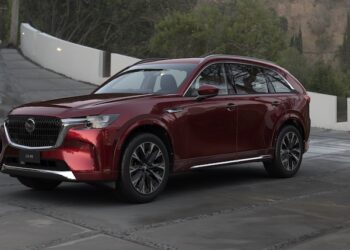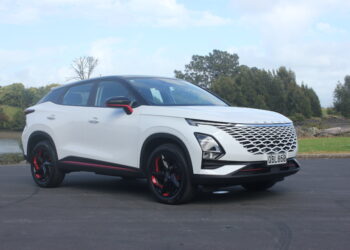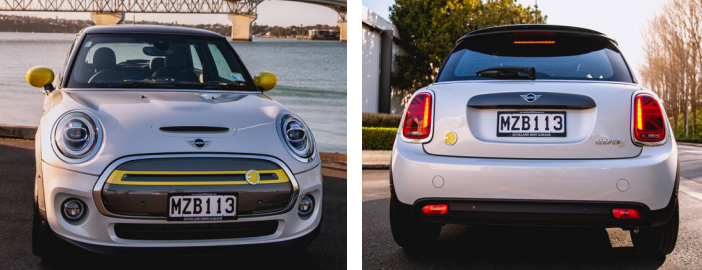
In the electric vehicle world, especially when playing with new cars, it is tempting to expect every car to be able to so everything. I think it is a bit of a Kiwi trait – we rate our car not on how good it is on the city commute where it will spend most of its life, and more on its ability to handle the once-a-year road trip.
The new Mini Cooper Electric is a car where this attitude can work against it. In a world where new EVs generally come with 40kWh or more of battery capacity, and 250-300 or more range, the Mini stands out with a modest 32.6kWh pack (28.9kWh usable) and a claimed range of 233km. That sounds like not a lot, but as Mini points out in its launch material the model is “geared for metropolitan dwellers and intra-city commutes.”
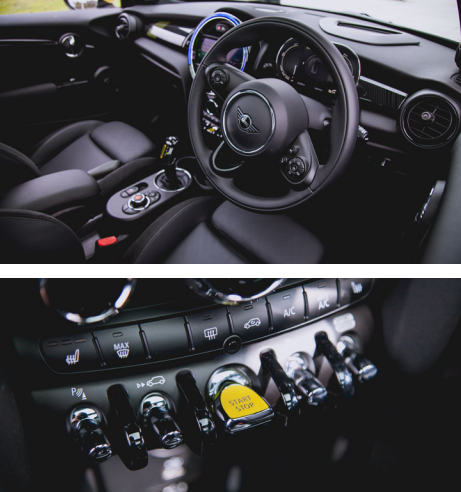
It is also not exactly expensive – in context. Based on the Mini Cooper S, at $59,990 it is just a $6000 premium over the petrol model. It is also nearly $19,000 cheaper than the i3 with which it shares its drivetrain – the battery is the same as the previous ’94Ah’ i3 – but gives away the carbon fibre tub and 11kWh in the process.
If Mini is tempted to put the bigger battery in the Mini, I am not sure that orange is worth the squeeze.
The first models to arrive in New Zealand have been dubbed a ‘First Edition’ – Mini loves editions. It is largely as per a normal Cooper S, so inside you get sporty part leather seats, two screens, Apple CarPlay, heated front seats, funky switchgear and crazy coloured lights. Outside you get a few trim accents to indicate the Mini is very much an electric model.
It is a Mini, don’t expect it to be a family car. It is fantastic for two with luggage – just fold the rear seat, which I would describe as occasional, down.
The wheels are very cool, an asymmetric design that really stands out.
The motor, shifted to the front of the car from the rear of the i3, produces 135kW of power and 270Nm of torque. It is good for a 7.3 second sprint to 100km, and while I am not sure it feels as punchy as a petrol Cooper S, it is certainly nippy. You get Sport, Mid, Green and Green+ drive modes, equivalent to the Sport, Comfort, EcoPro and EcoPro+ in the BMW, the former giving you full power, the later sacrificing performance and climate in the interest of efficiency.
How efficient is it? Not particularly. The WLTP figure for the car is 15.2kWh per 100km, but expect higher, especially if you drive with any form of zest.
The Mini is heavier than the BMW, and not as aerodynamically slippery. On a 100km mixed urban rural drive we recorded around 18kWh per 100km, meaning a sub 200km range.
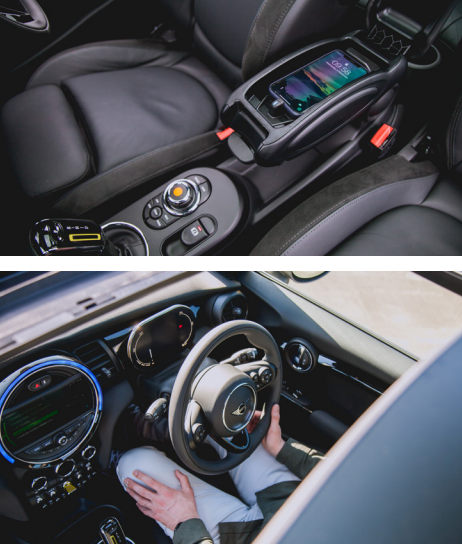
But again, does this matter? For those rushing to order, nope.
Charging is a mixed bag. The Mini’s fuel filler is replaced with a CCS2 combo port. Literature indicates a 35 minute charge time to 80%. The actual charging speed is not great, we capped out at a rate of 41kW on an ABB 50kW unit – but the smallish battery keeps times down.
A pleasing note is the installation of an 11kW onboard charger, rather than the 7.4kW unit I expected to see. This means a sub three-hour charge on an 11kW level 2 charger. A visit to the mall will likely see you roll out with 100% in normal use.
So the big question is, does it drive like a Mini? Well yes and no. It is nippy, small and great for darting through traffic and nabbing that last small carpark space. But you can’t hide the weight of the battery, and it gives the Mini that usual EV ‘planted’ feel. It means it does not feel as ‘chuckable’ as a Cooper S – but is still great in its own way.
Any other complaints? Not a lot. The ride is a little firm, and there is no adaptive cruise control as standard. Again, city car, remember!
There has been some suggestion the Mini is a compliance car, and even BMW has admitted in the past they were not originally going to do an electric version until a new shared EV platform came along. Sure, there are a few compromises in electrifying a petrol platform, but I assure you, Mini lovers reserving one just won’t care.





